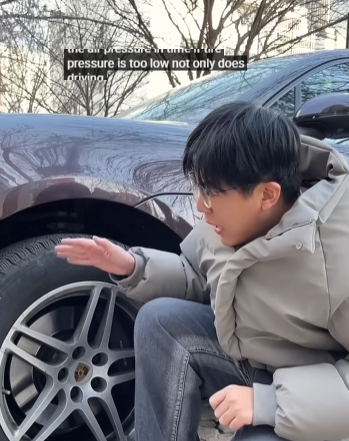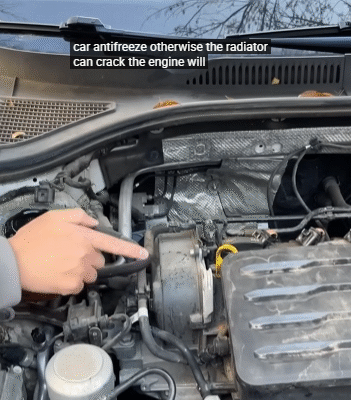
Winter can be harsh not just for people, but for vehicles too. Cold temperatures, snow, ice, and road salt can all damage your car if it’s not properly protected. Whether you live in a snowy region or just face occasional winter frosts, it’s essential to prepare your vehicle for the cold season to ensure safety, performance, and longevity. Here’s a detailed guide on how to protect your car during winter.
1. Get a Winter Inspection
Before the cold weather sets in, take your car to a trusted mechanic for a thorough inspection. The key systems to check include:
- Battery: Cold weather reduces battery capacity. If your battery is older than three years, consider replacing it.
- Brakes: Ice and snow increase stopping distances. Make sure your brakes are in excellent condition.
- Fluids: Check your oil, antifreeze, brake fluid, windshield washer fluid, and transmission fluid. Use winter-grade fluids if necessary.
- Tires: Ensure your tires have adequate tread depth and pressure.
An inspection gives you peace of mind and reduces the chances of a winter breakdown.

2. Switch to Winter Tires
Winter tires are specifically designed for cold temperatures. They have deeper treads and are made of rubber compounds that remain soft in freezing weather, providing better traction on snow and ice.
If you live in an area with regular snowfall, all-season tires won’t cut it. Winter tires drastically improve your vehicle’s grip, control, and safety.
Also, remember to check tire pressure regularly in winter. Cold air causes tire pressure to drop, which can affect fuel efficiency and handling.
3. Keep Your Car Clean
While it might sound counterintuitive, winter is one of the most important times to wash your car regularly. Road salt is notorious for corroding metal, leading to rust.
- Wash your car frequently, especially after snowstorms or driving on salted roads.
- Don’t forget the undercarriage, where salt accumulates and causes the most rust damage.
- Apply wax or ceramic coatings to provide a layer of protection on your paint.
A clean car in winter is not just about appearance — it’s about protection.
4. Protect Your Windshield and Wipers
Your windshield is your window to the road, and winter weather can easily impair visibility. Here’s what to do:
- Use a winter windshield washer fluid that won’t freeze in low temperatures.
- Install winter wiper blades designed to resist ice build-up.
- Place a windshield cover on your car when parked overnight to prevent frost build-up.
- Always keep an ice scraper and snow brush in your car.
If your wipers are leaving streaks or missing spots, replace them before winter weather makes driving hazardous.

5. Check Your Battery and Charging System
Car batteries can lose up to 50% of their power at zero degrees Fahrenheit. A weak battery might start your car fine in summer but fail in winter.
- Have your battery tested at a local shop.
- Check for corrosion on terminals and clean them if necessary.
- Carry jumper cables or a portable jump starter in case of emergency.
Battery failure is one of the most common causes of winter car breakdowns, and prevention is simple.
6. Use the Right Engine Oil
Motor oil thickens in cold temperatures, which can make it harder for your engine to start and run efficiently.
- Check your vehicle’s manual to see if low-viscosity oil is recommended for winter.
- Switch to synthetic oil if you haven’t already; it performs better in extreme temperatures.
Changing your oil before winter hits is a small step that can protect your engine during cold starts.

7. Prevent Door and Lock Freezing
Frozen car doors and locks are a winter annoyance many drivers face. To prevent this:
- Spray silicone lubricant or WD-40 on weather stripping around doors to repel moisture.
- Use graphite powder in your locks instead of liquid lubricants, which can freeze.
- If your doors are frozen shut, don’t yank the handle — this can damage the seal or break the handle. Instead, pour warm (not hot) water over the seam or use a de-icer spray.
A little preparation keeps your doors and locks working even in sub-zero temperatures.
8. Keep Your Fuel Tank Half Full
Keeping your fuel tank at least half full in winter helps prevent fuel lines from freezing. It also gives you extra fuel in case you get stuck in traffic or on the side of the road.
Additionally, the extra fuel acts as ballast, which can improve traction in some vehicles.
9. Build a Winter Emergency Kit
Getting stranded in winter can be dangerous. Every car should have a winter emergency kit with these essentials:
- Blanket or sleeping bag
- Flashlight and extra batteries
- Non-perishable snacks and water
- Ice scraper and snow brush
- Jumper cables
- First aid kit
- Small shovel
- Cat litter or sand (for traction)
- Cell phone charger or power bank
Preparation can make a huge difference in a winter emergency.

10. Use a Car Cover or Park in a Garage
If you have access to a garage, use it! A garage protects your vehicle from snow, ice, and freezing winds. If you don’t have a garage:
- Invest in a high-quality car cover made for winter use.
- Avoid parking under trees, where snow-laden branches could break off.
- Park facing east when possible, so the rising sun helps melt frost off your windshield.
A little foresight about where and how you park can reduce your winter troubles.
11. Warm Up the Engine Wisely
Many drivers idle their car for long periods to “warm it up,” but this is largely unnecessary with modern engines.
- Modern engines only need about 30 seconds to circulate oil.
- Driving gently for the first few minutes warms your car faster and is more fuel efficient.
- Excessive idling wastes gas and can cause carbon build-up.
Let your car warm up gradually as you drive — it’s better for the engine and the environment.

12. Maintain Visibility at All Times
Foggy windows and mirrors can be dangerous. Keep your defrosters in good working order. If you often experience condensation, consider:
- Using an anti-fog spray on windows.
- Keeping moisture-absorbing packs in the car.
- Checking for leaks in seals that might let moisture in.
Good visibility is crucial for safe winter driving.
Final Thoughts
Winter doesn’t have to be brutal on your vehicle. With a combination of preventive maintenance, the right accessories, and a little extra care, you can keep your car running smoothly all season long. Don’t wait until the first snowstorm — start your winter car care early and stay safe on the road.



